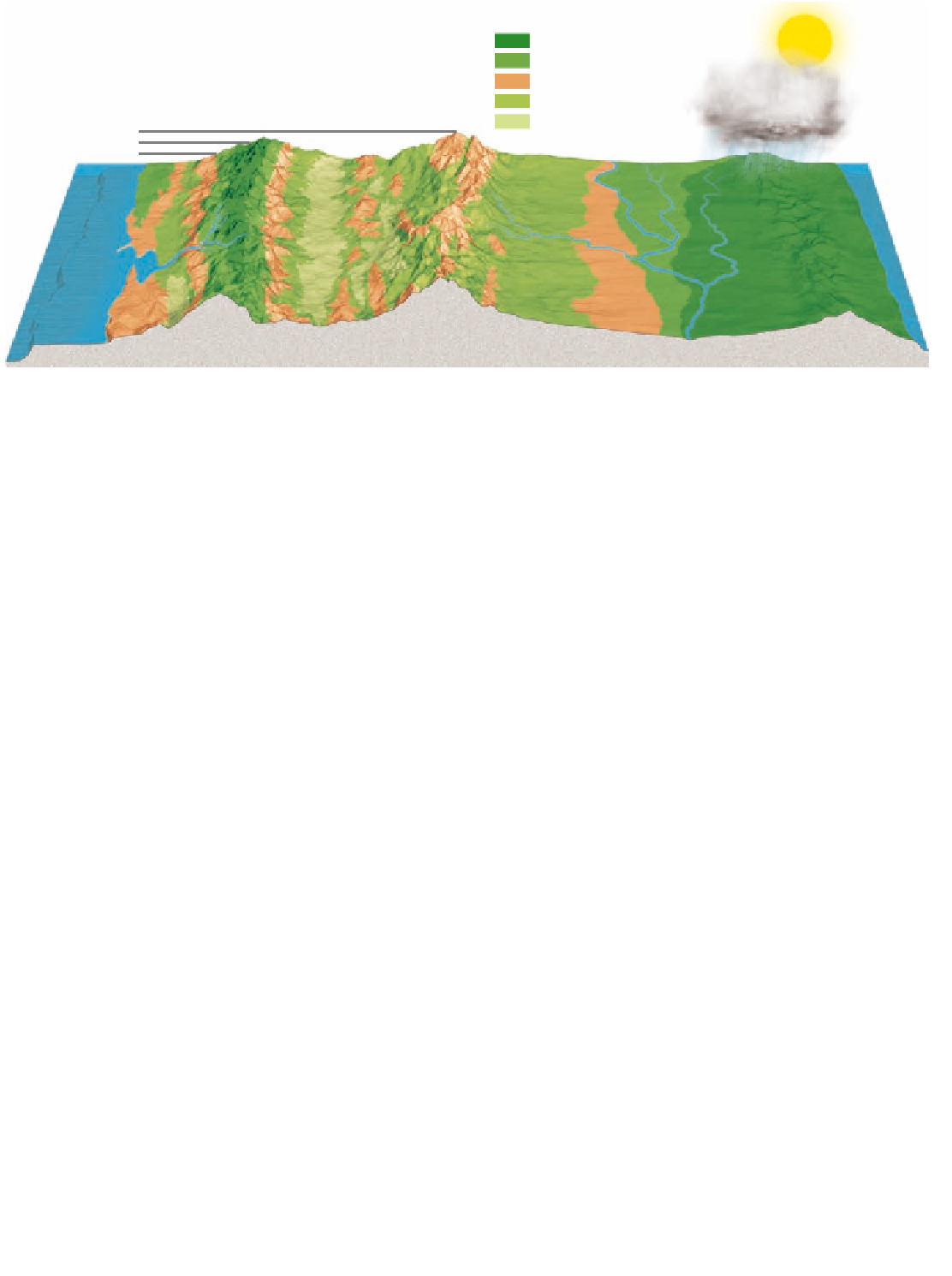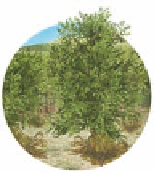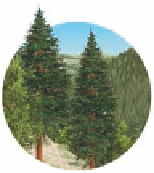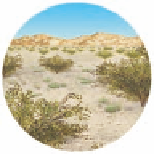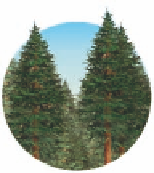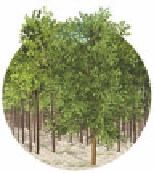Environmental Engineering Reference
In-Depth Information
Average annual precipitation
100-125 cm (40-50 in.)
75-100 cm (30-40 in.)
50-75 cm (20-30 in.)
25-50 cm (10-20 in.)
below 25 cm (0-10 in.)
4,600 m (15,000 ft.)
3,000 m (10,000 ft.)
1,500 m (5,000 ft.)
Coastal mountain
ranges
Sierra Nevada
Mountains
Great American
Desert
Rocky
Mountains
Great
Plains
Mississippi
River Valley
Appalachian
Mountains
Coastal chaparral
and scrub
Coniferous forest
Desert
Coniferous forest
Prairie grassland
Deciduous forest
Figure 3-8
Natural capital:
major biomes found along the 39th parallel across the United States. The differ-
ences reflect changes in climate, mainly differences in average annual precipitation and temperature.
systems. Examples include
freshwater life zones
(such as
lakes and streams) and
ocean
or
marine life zones
(such
as coral reefs, coastal estuaries, and the deep ocean).
cool or cold one. Some do best under wet conditions;
others succeed under dry conditions.
Each population in an ecosystem has a
range of
tolerance
to variations in its physical and chemical en-
vironment, as shown in Figure 3-11 (p. 43). Individuals
within a population may also have slightly different
tolerance ranges for temperature or other factors be-
cause of small differences in genetic makeup, health,
and age. For example, a trout population may do best
within a narrow band of temperatures (
optimum level or
range
), but a few individuals can survive above and
below that band. Of course, if the water becomes too
hot or too cold, none of the trout can survive.
These observations are summarized in the
law of
tolerance:
The existence, abundance, and distribution of a
species in an ecosystem are determined by whether the levels
of one or more physical or chemical factors fall within the
range tolerated by that species.
A species may have a
wide range of tolerance to some factors and a narrow
range of tolerance to others. Most organisms are least
tolerant during juvenile or reproductive stages of their
life cycles. Highly tolerant species can live in a variety
of habitats with widely different conditions.
Nonliving and Living Components
of Ecosystems
Ecosystems consist of nonliving (abiotic) and living
(biotic) components.
Two types of components make up the biosphere and
its ecosystems:
abiotic
or nonliving components such
as water, air, nutrients, and solar energy and
biotic
or
living biological components such as plants, animals,
and microbes.
Figures 3-9 and 3-10 (p. 42) are greatly simplified
diagrams of some of the biotic and abiotic components
in a freshwater aquatic ecosystem and a terrestrial
ecosystem. Look carefully at these components and
how they are connected to one another through the
consumption habits of organisms.
Different species thrive under different physical
conditions. Some need bright sunlight; others thrive in
shade. Some need a hot environment; others prefer a
